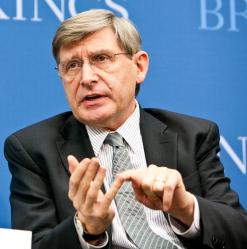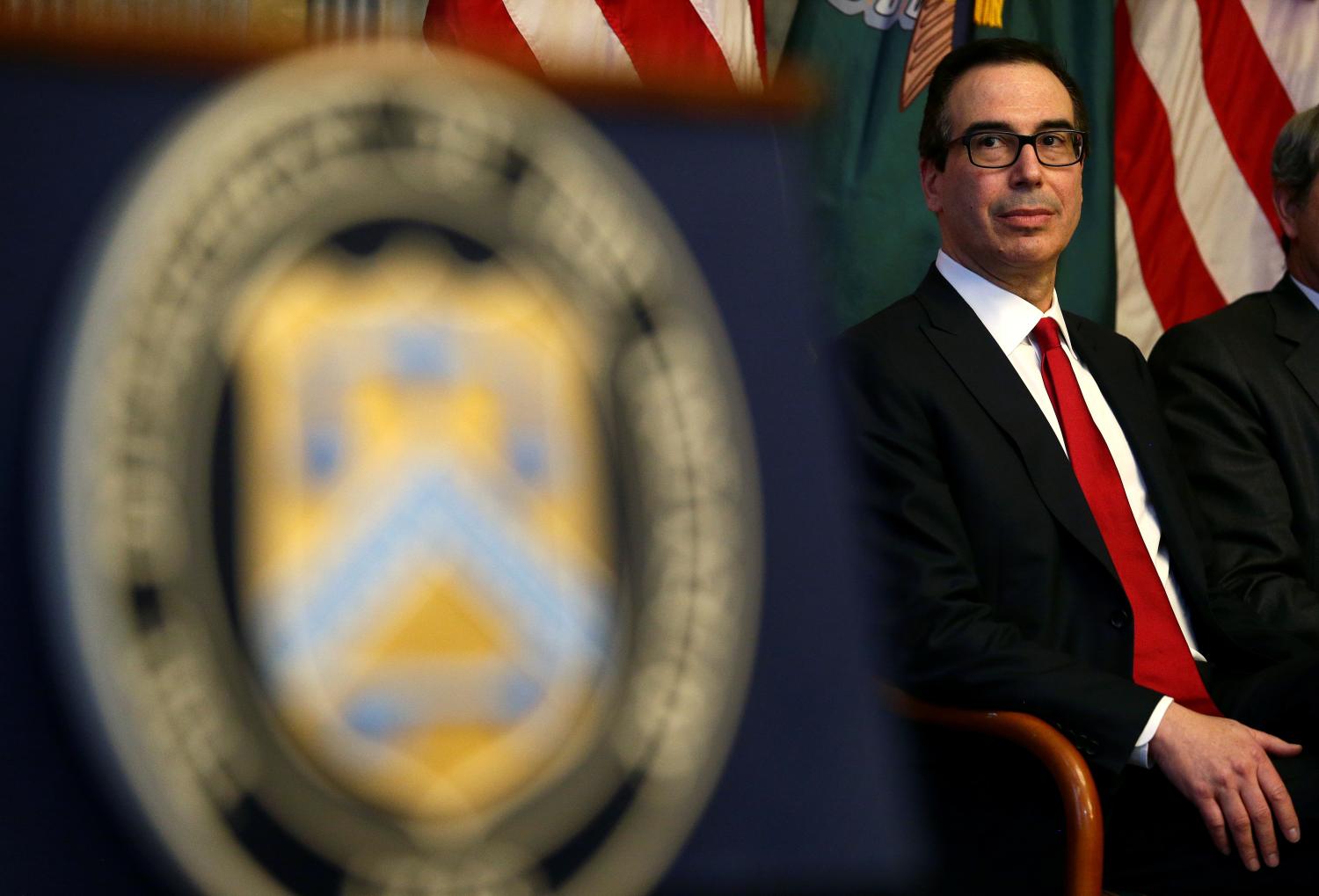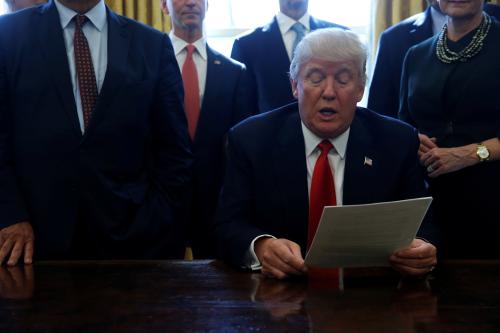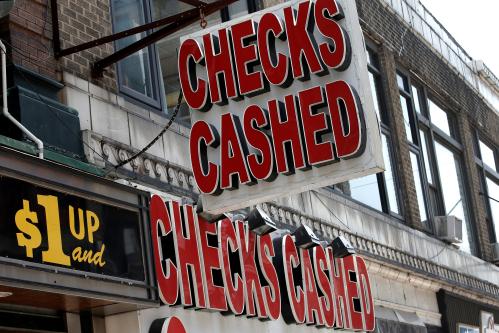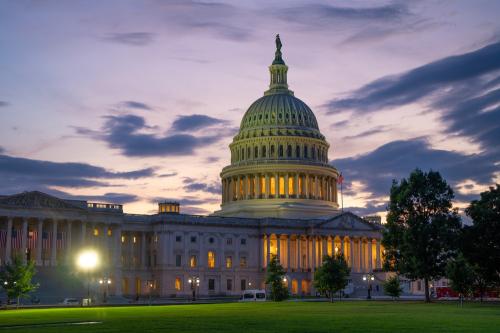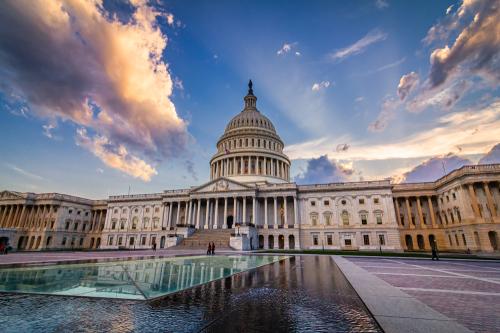This report is part of the Series on Financial Markets and Regulation and was produced by the Brookings Center on Regulation and Markets.
Donald Trump’s surprise victory led to expectations for massive changes in financial regulation to happen quickly. As a candidate, Trump had promised to ‘do a number’ on Dodd-Frank. His Administration began with a series of executive orders on financial regulation and with a Republican controlled Congress, deregulation was a front burner issue. A year into the Trump Administration, Dodd-Frank has not been significantly altered in law or implementation. Instead, it appears that 2017 mostly served to set up 2018 as the year of action.
What 2017 demonstrated is that the Dodd-Frank framework is here to stay. It will not be repealed or fundamentally replaced. However, financial regulators have significant scope to maneuver within the law and it appears likely that the new Trump appointed team will use that authority to reduce the burden and impact of regulation on financial firms. They will also adopt a more collaborative tone and working relationship with regulated firms. Proposals from the Treasury Department to date suggest that the deregulatory impulse will be focused on more moderate adjustments than major rollbacks, although that judgement is provisional, as it is still early. An important exception appears to be with respect to consumer regulation where the impulse demonstrated is more reactionary and threatens key advances made in consumer protection.
A detailed analysis of the year’s actions and what is likely for 2018 in financial follows:
Congressional Actions
Start with Congress. Despite the Republican sweep of the election, Congress remains unlikely to repeal and replace Dodd-Frank. While the House of Representatives passed legislation to do just that with the CHOICE Act, it stalled in the Senate. Instead, the Senate has focused on a set of more moderate changes to Dodd-Frank, exempting small and community banks from various rules, loosening requirements for certain mortgages, altering regulation on municipal debt, and changing the threshold for banks to be subject to enhanced prudential regulation (often called the SIFI threshold) from $50 billion in assets to potentially as high as $250 billion. This package of reforms was recently agreed upon between a group of moderate Senate Democrats and Republicans having been approved by the Senate Banking Committee in December by a vote of 16-7. It is likely that a version of this legislation, which contains a targeted rollback of some Dodd-Frank regulations and rules but leaves in place the majority of the law, will pass in 2018.
The most significant action taken by Congress in 2017 has been through the Congressional Review Act (CRA)
The most significant action taken by Congress in 2017 has been through the Congressional Review Act (CRA) which allows legislators to strike down recent regulations. CRA was used to nullify the Consumer Financial Protection Bureau’s (CFPB) regulation eliminating mandatory arbitration clauses in basic consumer financial agreements. It narrowly passed with the aid of a tie-breaking vote by Vice President Pence. Future use of the CRA to strike down new regulations will be unlikely in 2018 because fewer regulations will be issued and those that are put forward are done under the guidance of Trump appointees. The one potential exception is the last major regulation promulgated by the CFPB on small dollar credit (aka payday loans) which could face a CRA challenge in 2018.
Executive Action
Executive action was dominated by the Treasury Department, which spent this year laying out its vision in a series of reports structured in response to the President’s February Executive Order 13772. The reports largely accept the broad structure of Dodd-Frank and generally avoid proposing radical changes or repealing core elements of the legislation. They detail a series of critiques to implementation of aspects of Dodd-Frank and suggest changes. The general thrust is to fine-tune regulations in ways that reduce burden on industry, or to exempt certain activities. The devil is in the details in the world of financial regulation and small changes can significantly change a regulation’s impact.
The path laid out by the Treasury Department’s reports would constitute a substantial change of direction down the Dodd-Frank road, not a change of course to another path. For example, Treasury led the process to de-designate financial crisis poster-child AIG as a systemically important financial institution, and indicated that designation of other firms is unlikely. Instead, Treasury indicated that it will focus instead on monitoring ‘activities and practices’ that create systemic risk. Treasury’s shift in focus is important, but it is using other tools from the tool box Dodd-Frank created, not rejecting the structure created by the law.
Financial Regulators
Financial regulators are created to be largely independent of the Treasury Department. The recommendations in the Treasury’s reports are just recommendations directed to independent regulators. To date most of those recommendations have not been implemented. Their failure to be implemented is a result of two factors: the pace of leadership change and regulatory changes take time. It is not clear if regulators will fully implement the recommendations next year. That answer depends on who is in charge at each regulator.
Personnel is policy, an area of rare agreement of both Treasury Secretary Mnuchin and Senator Elizabeth Warren (D-MA).
Personnel is policy, an area of rare agreement of both Treasury Secretary Mnuchin and Senator Elizabeth Warren (D-MA). A Republican controlled Senate, coupled with the elimination of filibusters for personnel, meant that once nominated regulators were usually quickly confirmed, leading to increased expectations for 2017. But President Trump was slow in assembling his financial regulatory team for banks (although quicker for capital market regulation). For example, despite inheriting multiple vacancies at the Federal Reserve Board of Governors, Trump did not nominate anyone until July, when he nominated Randall Quarles to be Vice Chairman of Bank Supervision. The Senate confirmed Quarles in 86 days, quicker than the average confirmation process for a Fed Governor over the last twenty years. Thus, it was not until October that the first Trump appointed member of the Federal Reserve took office.
In addition, financial regulators are generally structured with terms that extend beyond Presidencies to avoid sharp swings in policy direction. Thus, each agency experienced a different transition. A brief recap of major changes at each agency follows. Although the experiences differ, sometimes substantially, a common theme emerges: change came slowly and 2018 figures to be a year of more action than 2017.
When New Year’s Day rolls around, President Trump will likely have nominated all but one of the Board of Governors of the Federal Reserve, including its new Chairman Jerome (Jay) Powell. Combined with Vice-Chair Quarles, the Fed’s new leadership is likely to undertake more significant changes in 2018, already starting the process to alter how stress tests are administered. Yet, Powell promised broad continuity with his predecessor Chair Yellen, who served as Chair well into December, 2017. Multiple vacancies on the Fed Board still remain, with economist Marvin Goodfriend nominated to one in December, and no one nominated for the Board spot set aside for someone with community banking expertise.
The capital market regulatory team was put in place faster, with a new chairman, Jay Clayton, at the Securities and Exchange Commission (SEC) nominated in January and the elevation of an existing Republican commissioner at the Commodities Futures Trading Commission (CFTC), J. Christopher Giancarlo. These bipartisan Commissions have indicated they will take different directions than their predecessors with a notable reduction of enforcement actions occurring at the SEC. However, they have not yet proposed major new regulations or rolled back existing ones. Financial Technology (FinTech) is likely to be an area of focus in 2018 for both regulators, given the spike in interest and trading in crypto/digital currencies, including Bitcoin and other initial coin offerings.
Change came to the Office of the Comptroller of the Currency (OCC) almost immediately after the expiration of Comptroller Curry’s term at the end of April when the President appointed an acting Comptroller, Keith Norieka. The appointment of Noreika, a prominent Washington lawyer, was itself controversial, breaking with precedent of career OCC officials serving during transitions. Noreika was active during his time as Acting Comptroller, proposing changes to how the OCC implements the Community Reinvestment Act, reopening the debate as to whether the US should eliminate the separation of banking and commerce, and withdrawing prior OCC regulations prohibiting short-term bank loans known as deposit advance products. The Senate’s confirmation of Joseph Otting as Comptroller in mid-November could signal another change of direction at the OCC, but that remains unclear. Otting’s prior experience working as a banker with Treasury Secretary Mnuchin may signal a closer relationship between the OCC and Treasury.
CFPB Director Cordray continued his aggressive agenda through most of the year before stepping down in November 2017. A dispute over who can serve as Acting Director has ended up in court, although at the moment the President’s choice Mick Mulvaney is functionally controlling the Bureau. The decision to appoint Mulvaney to serve as both the White House head of the Office of Management and Budget and Acting Director of the CFPB raises concerns about regulatory independence and is a clear signal that the Bureau is likely to pursue a radically different course in 2018. Mulvaney has already indicated multiple areas of disagreement with prior CFPB work, including a reduction in enforcement and seeking fines. Ironically, President Trump himself weighed in one such case, publicly tweeting that perhaps Wells Fargo should have a greater fine. It is safe to expect CFPB to be a major point of controversy in 2018.
The terms of the Chairman of the FDIC allowed Martin Gruenberg, Obama’s appointed head, to remain through most of 2017. FDIC Chairman Gruenberg’s term expired in November, and President Trump waited until after that to nominate Jelena McWilliams as the new Chair. Her nomination is still pending before the Senate.
Finally, the Office of Financial Research (OFR), created under Dodd-Frank and envisioned to be as independent also experienced its first change in leadership with its initial Director Richard Burner stepping down in November 2017. The appointment of the Treasury Department’s chief risk officer as the acting OFR director and large budget cuts for OFR which can be administered by Treasury (with agreement of other financial regulators), will likely put OFR on a path to diminished independence and relevance.
2017 will be remembered as a table setting year for larger changes in financial regulation. Trump’s election will have major consequences for financial regulation. They may not be as large as some predicted (or hoped). Dodd-Frank is here to stay. However, 2018 is likely to feature far more significant changes in implementation of Dodd-Frank as well as potentially its most major legislative changes. But if prior years are any guide, financial regulation can be as difficult to forecast as financial markets.
The Brookings Institution is committed to quality, independence, and impact.
We are supported by a diverse array of funders. In line with our values and policies, each Brookings publication represents the sole views of its author(s).
